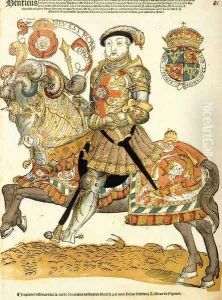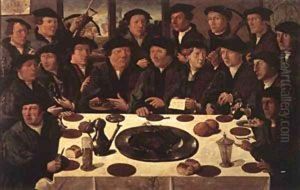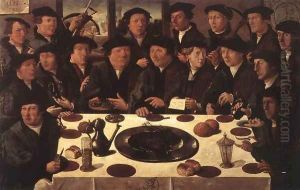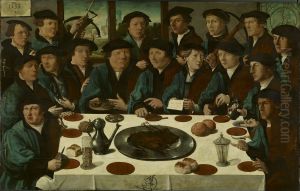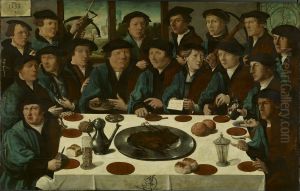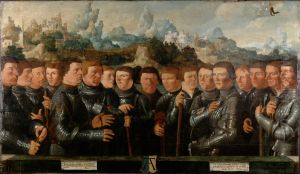Cornelis Anthonisz. Paintings
Cornelis Anthonisz., also known as Cornelis Anthoniszoon, was a Dutch painter, engraver, and cartographer, born around the year 1500 in Amsterdam. Very little is known about his early life, but he is believed to have been a grandson of the painter Jacob Cornelisz van Oostsanen and a relative of the Antwerp painter Anthonis Mor van Dashorst. Anthonisz. was a significant figure in the Northern Renaissance, primarily active in his native city of Amsterdam, which was emerging as a major center of commerce and culture during his lifetime.
The works of Anthonisz. are characterized by their detailed execution and often contain elements of satire and moralizing, reflecting the humanist values of his time. He was one of the first Dutch artists to work almost exclusively on secular subjects, diverging from the predominantly religious themes that were common in the art of the early 16th century. His style was influenced by the works of Hieronymus Bosch, particularly in his use of fantastical imagery and grotesque figures.
One of Anthonisz.'s most famous works is the large woodcut map of Amsterdam, created in 1538, which is considered a masterpiece of cartography and one of the earliest known perspectives of the city. He also produced a notable painting, 'The Banquet of Members of Amsterdam’s Crossbow Civic Guard,' which is an important example of a schutterstuk, a group portrait of civic guardsmen that was a popular genre in Dutch Golden Age painting.
Cornelis Anthonisz. was also known for his engravings and woodcuts, which were widely disseminated and contributed to his reputation. These prints often depicted allegorical scenes, landscapes, and portraits. His work as a printmaker helped establish the tradition of printmaking in the Netherlands, which would reach its zenith in the following century with artists such as Rembrandt.
Anthonisz. passed away in 1553 in Amsterdam. While he may not be as well-known today as some of his contemporaries, his contributions to Dutch art, particularly in the fields of cartography and printmaking, were significant. His legacy is preserved in the collections of various museums, including the Rijksmuseum in Amsterdam, which holds several of his works.
